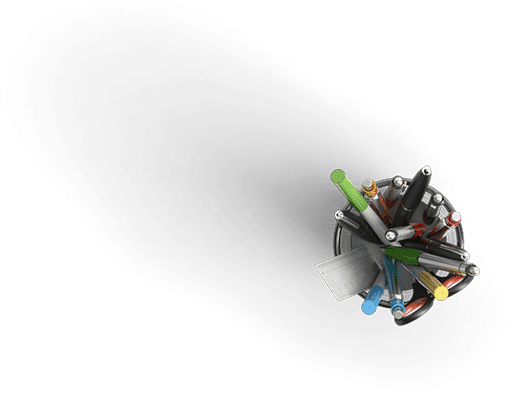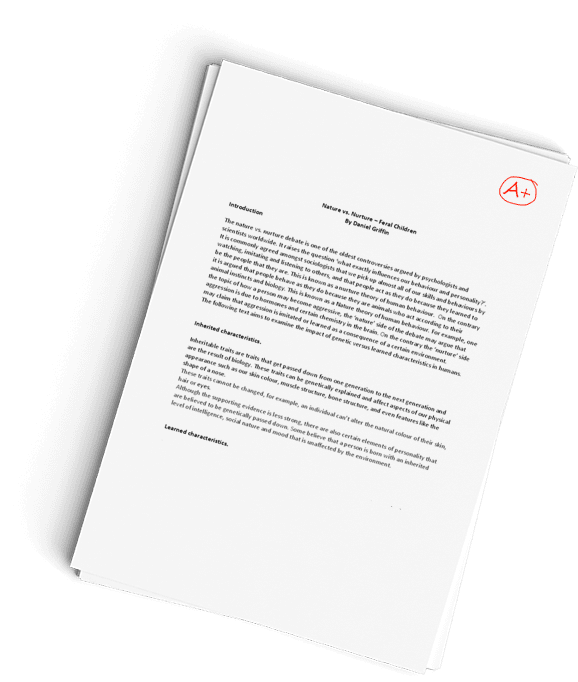West Los Angeles College Occupational and Environment Hazard Discussion
Question Description
THERE ARE THREE QUESTIONS
- Compare and contrast how occupational factors and social and psychological factors contribute to the cause of cancer.
- Describe four ways to reduce your risk of developing cancer.
- Do you think the rates of cancer will increase beyond that of heart disease, why or why not?
For full credit, you will have to answer each of the three (3) questions in a separate paragraph with insightful, in depth and complete answers using both personal and textbook information which must include at least one in-text citation from the assigned reading per post (1 quote per chapter). Acceptable minimum amount to get maximum points: at least 150 words per question (each of the THREE paragraphs). Posts that do not meet the minimum word length will receive a ZERO.
College level writing and responses are needed (yes, spelling counts, do not act as though you are texting) and do not copy the questions. Posts that do not have a quote from the textbook will receive a ZERO.
DO NOT COPY ANY PASTE THE QUESTIONS, ONLY SUBMIT YOUR ANSWERS.
You must include one in-text citation from the assigned reading per post (1 quote per chapter). Example: “Many people believe that the best way to achieve wellness is to adopt a holistic approach” (p. 5).
Do not use the author (it is the required text), only the lowercase ‘p’, a period and a space before the page number.
(1 quote per chapter)
READ CHAPTER 13B
OVERVIEW
Chapter 13 examines cancer, the second leading cause of deaths in the United States. There are many different types of cancers,each with their own risk factors. It isimportant that the student understand the nomenclature and treatments forcancer so they can make sound decisions for themselves and their lovedones. Primary focus of this section ofthe chapter, for the student, needs to be related directly to controllable riskfactors such as smoking, fat in the diet, exposure to the sun, etc. The student also needs to understand theearly warning signs for these deadly disease processes in order to preventdisability and death whenever possible.
LEARNING OBJECTIVES
1. Define cancer and discuss how it develops.
2. Discuss the causes of cancer, includingbiological causes, occupational and environmental hazards, lifestyle,psychological factors, chemicals in foods, viruses, and medical causes.
3. Describe the different types of cancer andthe risks they pose to people at different ages and stages of life.
4. Explain the importance of understanding andresponding appropriately to self-exams, medical exams, and symptoms related todifferent types of cancer. Explain the importance of early detection.
5. Discuss cancer detection and treatment,including radiation therapy, chemotherapy, immunotherapy, and other commonmethods of detection and treatment.
OUTLINE
I. An Overview of Cancer.
A. In 2003, 556,500 Americans died of cancer and nearly1.3 million new cases were diagnosed. More than 1.3 million people will be diagnosed with cancer in a year.Nearly 6 out of 10 will be alive 5 years after diagnosis.
B. Cancer rates vary by race.
1. African Americans are more likely to be diagnosed with cancer than anyother racial and ethnic group.
2. African Americans are 33% more likely to dieof cancer than whites and more thantwice as likely than Hispanics, Asian/Pacific Islanders and American Indians.
3. May be due to lower SES and limited access to health care.
C. Cancer isthe name given to a large group of diseases characterized by the uncontrolledgrowth and spread of abnormal cells.
1. This new growth of tissue, serving nophysiological function, is called neoplasm.
a. This neoplastic mass often forms a clumpingof cells known as a tumor.
b. Benign tumors are non-cancerous normallooking cells that are enclosed in a fibrous shell and do not spread.
c. Malignant tumors are cancerous, with abnormallooking cells that are not enclosed in a protective capsule and can spread toother organs.
2. Metastasis is the spreading of cancer cellsto other organs.
3. Cancer cells disturb the DNA and RNA withinnormal cells and cause mutant cells.
II. What Causes Cancer? (See Figure 13.1)
A. Many factors are believed to contribute tocancer development. Combining riskfactors can dramatically increase risk for cancer.
B. There are several theories about the causesof cancer.
1. One theory states that cancer results fromsome spontaneous error that occurs during cell reproduction.
2. Another theory states that cancer is causedby some external agent or agents that enter a normal cell and initiate thecancerous process.
a. Carcinogens are cancer-causing agents.
b. Examples of carcinogens include radiation,chemicals, hormonal drugs, immunosuppressant drugs, tar from cigarettes, etc.
3. A third theory states that suspectedcancer-causing genes called oncogenes, lie dormant until stimulated by certainconditions, such as age and stress, and then develop into cancer.
a. It is still questionable whether or not weall have protooncogenes.
b. Oncologists (physicians who specialize intreatment of malignancies) believe that the oncogene theory will help usdevelop more effective treatment for cancer.
C. Lifestyle factors which increase risk for cancerinclude sedentary lifestyle, consumption of alcohol and cigarettes, stress, anddiet high in fat.
1. Smoking is probably the greatest risk factor for cancer.
2. Obesity is linked to many cancers especially reproductive andgastrointestinal.
D. Biological Factors include genetics andgender. Most forms of cancer are notgenetically linked.
1. Cancer is more likely caused by a complexinteraction of hereditary predisposition, lifestyle, and environment. Some cancers appear to run in families.
2. Gender affects the likelihood of developingcertain forms of cancer, such as breast cancer.
E. Occupational and environmental hazards areknown to cause cancer when exposure levels are high or prolonged.
1. Asbestos is the most widely knownoccupational carcinogen.
2. There are many other known occupationalcarcinogens, like benzene, arsenic, coals, etc.
3. Radiation can be a carcinogen.
a. Ionizing radiation from X-rays, radon, cosmicrays, and ultraviolet radiation is proven to cause human cancer.
b. Non-ionizing radiation is under debate, withsome studies showing that living near nuclear power plants increases risks.
F. There are several psychological and socialfactors that contribute to cancer development.
1. Stress has been implicated in increasingsusceptibility to several types of cancers.
2. People who suffer chronic severe stress, arelonely, depressed, and lack social support have been shown to be moresusceptible to cancer.
3. The American Cancer Society states thatcigarette smoking is responsible for 30% of all cancer deaths. ETS causes an estimated 4,000 deaths fromlung cancer in nonsmokers.
G. Chemicals in food have been implicated as acause of cancer.
1. Sodium nitrate, a chemical to preserve andgive color to red meat, can develop into nitrosamine, a carcinogen, whendigested.
2. Pesticide and herbicide residue left onplants is another concern.
H. Certain viruses have been associated withcancer.
1. Herpes related viruses may be involved in thedevelopment of some forms of leukemia, Hodgkins disease, cervical cancer, andBurkitts lymphoma.
2. Cervical cancer has been associated with thehuman papilloma virus.
3. Epstein-Barr virus has also been associatedwith cancer development.
4. Helicobacter pylori, a bacteria, is a majorfactor in stomach cancer.
I. Certain medical factors may contribute tocancer development.
1. DES was a drug given to pregnant women toreduce the risk of miscarriage that caused cancer in the offspring.
2. Estrogen replacement therapy has been linkedto uterine cancer.
III. Types of Cancers.
A. There are several broad classifications ofcancer according to the type of tissue from which the cancer arises:
1. Carcinomas affect the epithelial tissue andmetastasize through the circulatory or lymph system. These are most common and include breast,lung, intestines, skin and mouth carcinomas.
2. Sarcomas occur in the mesodermal layer oftissues and metastasize via the blood. While less common, these are more virulent. Examples include bones, muscles, and generalconnective tissue cancers.
3. Lymphomas develop in the lymphatic system andmetastasize through the lymphatic system. Hodgkins disease is one type of lymphoma.
4. Leukemia occur in the blood-forming parts ofthe body like bone marrow and spleen. They are nonsolid tumors, and leukemia is characterized by an abnormalincrease in white blood cells.
B. Lung cancer is the number one cause of deathfrom cancer for both men and women.
1. Symptoms include a persistent cough,blood-streaked sputum, chest pain, and recurrent attacks of pneumonia orbronchitis.
2. Surgery, radiation, and chemotherapy are alltreatment modes.
3. Just 13 percent of lung cancer patients live5 years or more after diagnosis.
4. Prevention of lung cancer includes refrainingfrom cigarette smoking or being exposed to environmental tobacco smoke, anddecreasing the amount of exposure to occupational carcinogens, such as asbestosand arsenic.
C. Breast cancer risk depends on age.
1. Overall risk at age 40 to 59 is 1 in 25, atage 60-79 it is 1 in 15.
2. Breast cancer is the second leading cause ofcancer death for women.
3. Mortality rates are falling in white women,but not in black women. Some believe this is due to differences in earlydiagnosis and treatment.
4. Symptoms include breast changes such as alump, thickening or swelling, dimpling, skin irritation, distortion, and nipplepain or discharge.
5. Risk factors may vary but include being overthe age of 40, having a primary relative that has had breast cancer, neverhaving children or having your first child over the age of 30, having had earlymenarche, late menopause and having higher education and SES.
6. Early detection leads to better survivalrates.
7. Prevention includes exercise, regularself-examination (see Figure 13.3), and regular physical exams includingmammograms.
8. Treatments range from simple lumpectomy toradical mastectomy to various combinations of radiation or chemotherapy.
D. Colonand rectal cancers are the third leading cause of cancer death.
1. Symptoms include bleeding from the rectum,blood in the stool, and changes in bowel habits.
2. Family history of the disease, as well asinflammatory bowel problems, may increase risk. High fat, low fiber diets are associated with increased risk.
3. Colorectal cancers spread slowly andprognosis is good if caught in early stages.
E. Prostate cancer is the second leading causeof cancer death for men.
1. Symptoms include weak or interrupted urineflow or difficulty starting and stopping urine flow, the need to urinatefrequently, pain or difficulty urinating, and pain in the lower back, pelvis orupper thighs.
2. Incidence increases with age.
3. Most prostate cancers are detected whilestill localized and tend to progress slowly.
F. Skin cancer is one of the most underratedforms of cancer.
1. It comes in two forms:
a. Basal or squamous cell skin cancers, whichare highly curable.
b. Malignant melanoma, a highly virulent cancerthat is the most frequent cancer of American women ages 25-29 and runs secondto breast cancer in women 30-34.
2. Symptoms include any unusual change in skincondition.
a. The symptoms of melanoma include a change in a molesappearance from a small mole-like growth to a large ulcerated, andeasily-prone-to-bleed growth.
b. The ABCD rule looks for asymmetry, border irregularity,color, diameter to help the consumer make decisions about seeking treatment.
3. Treatment of skin cancer depends on theseriousness of the condition.
a. Surgery is used in 90% of the cases.
b. Radiation, electrodesiccation, andcryosurgery are other options.
G. Testicular cancer is one of the most commontypes of solid tumors found in males entering early adulthood. Males between 17 and 34 are at greatest risk.
1. Symptoms include a painless enlargement ofthe testis or an apparent thickening in the testicular tissue.
2. Testicular self-examination is a key to earlydiagnosis.
H. Ovarian cancer usually shows nonspecificsymptoms until late stages.
1. Symptoms include an enlargement of theabdomen or feeling of bloating in women over age 40.
2. Risk increases with age.
3. Main risk factor is exposure to estrogen, sowomen who never had children are more likely to have ovarian cancer. Using birth control pills or having multiplebirths lowers estrogen.
4. Reducing saturated fat and increasingvegetable fiber in the diet are proposed preventive factors, as are regularpelvic exams.
I. Endometrium (Uterine) Cancer usually developsin the endometrium.
1. Pap tests screen for cervical (early-stage)cancer, but not uterine lining cancer.
2. Risk factors for cervical cancer includeearly age of first intercourse, multiple sex partners, cigarette smoking, some STIssuch as herpes and human papilloma virus.
3. Risk factors for endometrial cancer includeinfertility, failure to ovulate, obesity, unopposed estrogen therapy andtreatment with tamoxifen.
4. Symptoms include bleeding outside the normal menstrualperiod or after menopause or persistent vaginal discharge.
J. Pancreatic cancer has increased substantially.
1. Pancreatitis, diabetes, cirrhosis and high fat dietincrease the risk. Smokers are at higherrisk.
2. Only 4% of patients diagnosed live more than 5 years,deadly cancer.
K. Leukemia is a cancer of the blood-formingtissues that leads to the proliferation of millions of immature white bloodcells.
1. Symptoms include fatigue, paleness,nosebleeds, hemorrhaging, and repeated infections.
2. Leukemia can be acute or chronic.
a. Five year survival rates have increased to 73.1% by 2003.
b. There have been great improvements in theprognosis of acute lymphocytic leukemia.
IV. Facing Cancer.
A. Detecting cancer in early stages can enhanceprognosis.
1. High-tech medical diagnoses andself-examination are both important aspects.
a. MRI has replaced exploratory surgery for somecancer patients.
b. CT scan uses x-rays to examine parts of thebody and shows a tumors shape and location.
c. Prostatic ultrasound uses a rectal probe tolook at the prostate.
d. Prostate-specific antigen, found in prostate cancerpatients, can be found with a blood test.
2.The 7 warning signals for cancer can be remembered with the CAUTION acronym. If you see them goin for a checkup. (See Table 13.3)
a. Changes in bowel or bladder habits
b. A sore that does not heal
c. Unusual bleeding or discharge
d. Thickening or lump in breast or elsewhere
e. Indigestion or difficulty in swallowing
f. Obvious change in a wart or mole
g. Nagging cough or hoarsensess
3. There are several recommended cancercheckups.
a. A yearly Pap test and pelvic exam.
b. A monthly breast self-exam starting at age 20.
c. A mammogram every year or two between the agesof 40-49 and every year starting at age 50.
d. A prostate-specific antigen blood test everyyear starting at age 50.
e. A stool test for hidden blood once a yearafter age 50.
f. A sigmoidoscope exam every three to five yearsafter age 50.
g. A dental checkup at least once a year.
B.There have been several new advances in cancer treatment.
1. Todays surgery removes less tissue thanpreviously.
2. Radiotherapy and chemotherapy are often usedin combination with surgery.
a. Radiotherapy is the use of radiation todestroy malignant cells.
b. Chemotherapy is the use of anti-cancer drugsto kill cancer cells.
c. Both have serious side effects includingextreme nausea, nutritional deficiencies, hair loss, and general fatigue. Long-term damage can occur to thecardiovascular system and other organs.
3. Communication with medical professionals is essentialwhen choosing treatment.
4. Taxol, derived from the Pacific Yew trees, is beingtested on a variety of cancers.
5. Tamoxifen is also being tested as analternative to chemotherapy for breast cancer.
6. Immunotherapy is a new technique to help thebodys own disease fighting systems control cancer.
7. Gene therapy includes transferring genes thatincrease the patients immune response to the cancer, or that confers drugresistance to the bone marrow so that higher doses of chemotherapeutic drugscan be given.
8. Angiogenesis Inhibitors may aid in inhibitingthe flow of nutrient and oxygen rich blood to the cancerous tumors, slowinggrowth.
9. Rational Drug Design involves designing drugsaimed at specific molecules along the cancer pathway to inhibit action.
10.Cell mutations can cause increased production of destructive enzymes that allowthem to invade surrounding tissues.
11.Neoadjuvant chemotherapy combines surgery and chemotherapy.
C. If cancer is diagnosed, it is important toask your doctor questions. See the listof suggested questions on page 361.
D. Life after cancer is less threatening andisolating than it once was.
1. Health insurance is now available to cancersurvivors.
Life insurance coverage is also available.
Have a similar assignment? "Place an order for your assignment and have exceptional work written by our team of experts, guaranteeing you A results."








